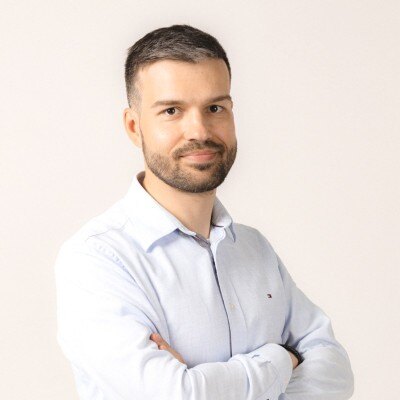In his presentation, Dmitry Shcherbo discussed the latest trends in Next Generation Sequencing (NGS) technologies, particularly focusing on liquid biopsies for cancer detection and monitoring. He began by explaining the concept of cell-free DNA (cfDNA), which primarily originates from blood cells, with a small fraction coming from tumours in cancer patients. This makes cfDNA valuable for diagnostics and monitoring, as circulating tumour DNA (ctDNA) can be detected at various stages of the patient journey, from diagnostics to therapy monitoring and relapse detection.
Shcherbo highlighted two main strategies for detecting ctDNA: tumour-agnostic methods, which use general cancer markers, and tumour-informed assays that require patient-specific tumour information. While tumour-informed assays are more sensitive, they necessitate a tumour biopsy. He also addressed the challenges in detecting ctDNA, such as the low quantity of cfDNA and technical limitations like errors in PCR amplification and sequencing.
To overcome these challenges, Shcherbo emphasised the importance of integrating multi-modal data, including proteomics, metabolomics, and different aspects of cfDNA, to enhance ctDNA detection. He cited the Guardant Shield test as an example of a multi-modal approach that showed impressive sensitivity in detecting colorectal cancer. He also discussed the role of machine learning in developing complex models to analyse integrated data from multiple sources, stressing the need for validation and standardisation to ensure accuracy and reliability.
Advancements in sequencing technology were another key point in Shcherbo's presentation. He noted that improvements in sequencing accuracy and reductions in cost have allowed for broader and deeper analysis of ctDNA. He mentioned the potential of using unconventional samples, such as dried blood spots or urine, to facilitate easier and more frequent testing, which could lead to earlier detection of cancer relapses.
In conclusion, Shcherbo summarised the trends in NGS technologies, highlighting the need for more data extraction, standardisation of workflows, and the development of new computational approaches to suppress sequencing errors. He also pointed out the potential of exploring alternative sample types for liquid biopsies, which could revolutionise cancer detection and monitoring.





